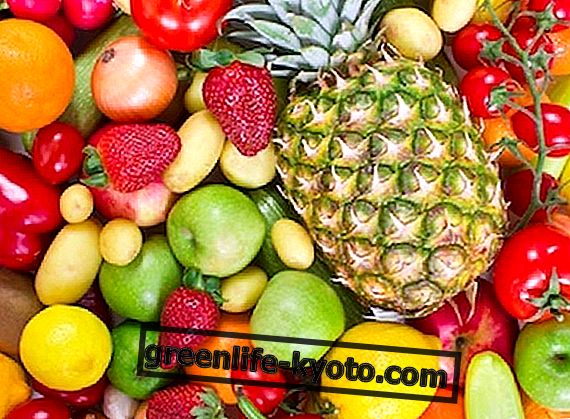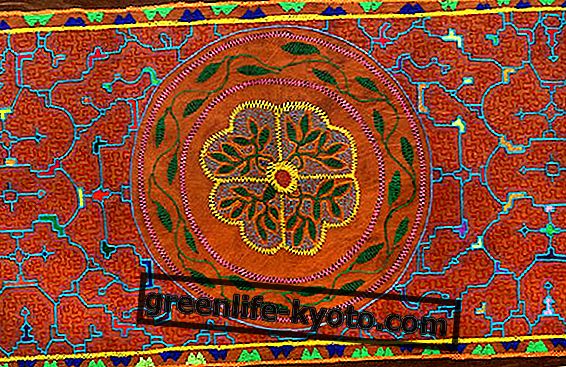Diabetes is a complex and chronic metabolic disease characterized by hyperglycemia, which is an increase in the level of glucose in the blood. Underlying the disease is an absolute and relative deficiency of insulin, the hormone produced by the pancreatic beta cells, which acts by regulating blood glucose levels. We see the various herbal remedies to treat it.
>
>
>

For diabetes, herbs and medicinal plants with hypoglycemic action are used in phytotherapy which, thanks to the richness of their phytocomplex, contain active ingredients that also intervene on disorders associated with this chronic disease, linked to glucose metabolism .
Diabetes is a pathology of the replacement, which manifests itself with alterations in the metabolism of sugars, due to insufficient or altered production of insulin by the pancreas.
Insulin is basically a hypoglycemic hormone, which increases the absorption of glucose by the cells when the blood sugar level is high (blood sugar). Together with glucose, insulin also promotes the entry of amino acids and lipids into cells and for this reason is called "the anabolic hormone par excellence". Diabetic patients due to an absolute or relative lack of insulin cannot use sugars; therefore these remain in circulation and cause an increase in blood sugar (hyperglycemia).
Among the different types of diabetes, two are the main forms:
- insulin-dependent (type I): characterized by a generally abrupt and severe onset, a consequence of infectious diseases, it appears in young subjects and requires insulin therapy .
- non-insulin-dependent (type II) has a gradual onset and generally affects middle-aged subjects, often overweight, who have cases of inheritance among first-degree relatives.
Diabetes represents a real health problem, since in the long term it can lead to very serious complications, especially at the level of the circulatory system, but not only: atherosclerosis, diabetic glomerulopathy, diabetic retinopathy, diabetic neuropathy and diabetic ulcer are only some of the associated diseases .
The first factor that must be corrected in diabetic subjects is nutrition: increase the intake of whole grains and foods rich in fiber ; consume vegetables and fresh fruit. Daily consumption of dried fruit can also be effective in controlling blood glucose and serum lipids for diabetics.
Furthermore, for people predisposed to hyperglycemia, there are some rules that must be strictly respected: avoid overweight and consume regular meals throughout the day, and eliminate or drastically reduce alcohol consumption.
Herbs and medicinal plants for diabetes
Diabetes requires a traditional pharmacological treatment, but alongside this therapy the use of active medicinal plants on carbohydrate metabolism may be useful .
In fact, in cases of mild hyperglycemia, a healthy and balanced diet, associated with a correct lifestyle, the use of natural remedies can suffice; while in the most serious cases synthetic drugs can be used, under medical supervision to avoid unwanted effects or in unwanted interactions, some plants with hypoglycemic action to be used in the form of tinctures, herbal teas or capsules .
- Blueberry : ( Vaccinum vitis idaea ) in folk medicine leaves are used for the treatment of diabetes, for gastrointestinal disorders, for the renal and urinary tract, for arthritis, for gout, for hemorrhoids and for dermatitis. The active ingredients are tannins, glycosidic flavonoids, phenolic acids, pectins, triterpenes, polyphenols (procyanidins and anthocyanins). Research has shown that the plant is able to reduce triglyceride levels in dyslipidemias and improve vascular microcirculation. Anthocyanosides have anti-ulcer, anti-inflammatory activity and are responsible for the properties of bilberry to inhibit capillary permeability in diabetic subjects and in circulatory disorders associated with this disorder, for diabetic vascular complications and retinal hemorrhages.
- Gymnema : ( Gymnema silvestre ) a climbing plant native to India and Africa; the therapeutic drug is given by its leaves, which contain gymnemic acids. The hypoglycemic action is expressed through two main mechanisms: it inhibits the absorption of sugars in the intestine; and stimulates the metabolic transformation of glucose at the cellular level, because it stimulates pancreatic beta cells in the production of insulin . Studies have shown that this active ingredient has a molecule similar to that of sugar, but larger, so it binds to intestinal receptors, used to absorb sucrose, reversibly blocking them. This blockage occurs quickly and lasts for many hours, especially if the doses are repeated throughout the day, preventing sugar absorption by 50% .
- Galega : ( Galega officinalis) the galegina contained in the plant gives it hypoglycemic properties, thanks also to the presence of chromium salts, which bring about a reduction in the blood sugar level . Its use is therefore indicated in the treatment of diabetes mellitus. Obviously it cannot replace insulin therapy, and should only be used by diabetics under medical supervision. The galley also exerts a purifying action on the liver and kidneys, thanks to its ability to increase the secretion of urine, promotes the elimination of sugars and toxins, through diuresis.
- Momordica : ( Momordica Charantia ) plant native to Asia and some African countries, belongs to the family of cucurbits, and has been used for centuries in traditional Chinese medicine and in Ayurvedic medicine for the control and treatment of diabetes and hypertension. Its fruits contain triterpen i, glycosides, saponins, alkaloids, proteins, vitamin A, C and those of group B, phosphorus, iron, and bitter substances such as mormordicosides K and L which give the plant the hypoglycemic action. Mormodic, in fact, is able to decrease glucose levels, because it stimulates the production of insulin, favoring gluconeogenesis .
- Burdock : the root of this plant contains lignans, B-complex vitamins, amino acids, trace elements, bitter substances, tannins and resins; but above all it consists of inulin, which has a draining and purifying action on the blood, which favors the elimination of toxins, that is the "waste" of the various metabolic reactions of the body. Its use is helpful and supportive in this important activity carried out by the liver, kidneys, intestines and skin, considered the natural excretors. The result of good drainage consists in an enhancement of hepatic and biliary activity, diuresis, intestinal transit and regulation of sebaceous secretion. Therapeutic use is therefore recommended in the treatment of diabetes and hyperglycemia ( in which case it should be taken under strict medical supervision, for the consequent interaction with synthetic hypoglycemic agents), to fight cholesterol, hyperuricemia that causes rheumatism and gout.
You can learn more about all the natural remedies for treating diabetes

The buds
- Morus Nigra : the gemmoderivato of black mulberry extracted from the glycerine maceration of fresh buds is the gemmoterapico of non insulin-dependent diabetes, (type II), which affects middle-aged, more or less obese people, due to its hypoglycemic action . It is also used for glucid intolerance or sub-clinical diabetes.
- Olea europea : the olive-derived gemmoderivative is obtained by maceration of young shoots and is indicated in the treatment of numerous disorders due to its antisclerotic, hypotensive and balancing action on liver and kidney function . For this reason it is used in the treatment of arterial hypertension, arteriosclerosis, dyslipidemia, hypercholesterolemia, hypertriglyceridemia and adult diabetes. The plant, in fact, decreases cholesterol and total lipids, thins blood by acting on thrombophilia. It has an action in cerebral predominance atherosclerosis, in certain syndromes of average hepatic insufficiency and minor renal failure. For this reason it is used in the treatment of type II diabetes and in diabetic arteriopathies .
- Viscum album : the gemmoderivato of the mistletoe obtained from the young shoots has been shown to be useful against the chronic disorders of the metabolism with diabetes, as it completely reactivates the replacement, in particular the dysmetabolie (above all glucidic and lipidic) associated with disorders of the blood vessels and to the limbs, with vertigo and spasms; hypertension; atherosclerosis, as it acts favorably on the cerebral centers of regulation of blood pressure.
Minerals for diabetes care
Chromium is an essential trace element that enhances insulin function and influences the metabolism of carbohydrates, proteins and fats.
The use of chromium in food supplements is recommended to lose weight and to improve blood sugar control in people with diabetes.
This mineral, enhancing the effect of insulin, has a beneficial effect on muscle protein anabolism. An increase in muscle mass, in turn, accelerating the basal metabolic rate would also favor the reduction of body fat .
The biological significance of chromium came to light in the late 1950s when an organic chromium complex was identified as an active element which was called Glucose Tolerance Factor ( Glucose Tolerance Factor, GTF ).
The precise nature of the GTF and the mechanism by which it stimulates the function of insulin in the body are still not entirely clear, but it could promote the absorption of insulin in the cells, facilitating their passage through cell membranes.












